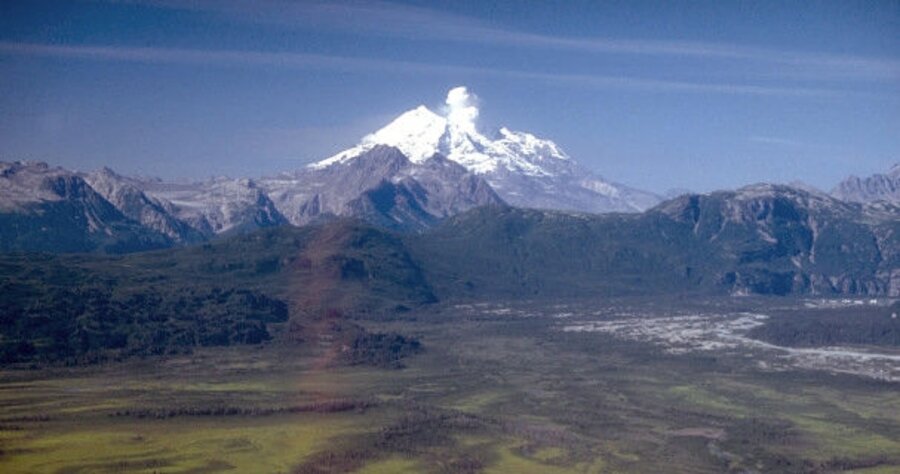USGS: Eruption risk from Alaska volcano rising
Alaska's known for dramatic scenery. That scenery is there because of very active geology.
Case in point: Mt. Redoubt, a 10,197-foot active volcano 103 miles west of Anchorage. Scientists at the US Geological Survey's Alaska Volcano Observatory (AVO) are keeping close tabs on the mountain. They say an eruption may be imminent.
(You can monitor the mountain too, weather permitting. Government scientists have set up webcams at two locations, here and here.)
Last fall, it showed signs that it may be waking up after a decade's slumber. Since Jan. 23, that activity has been rising -- largely marked by an increase in tremors recorded by seismic sensors near the summit.
According scientists to the AVO, the first tip that the mountain might be clearing its throat again came via peoples' noses. Toward the end of last September, residents downwind of the volcano reported the pungent rotten-egg smell of hydrogen sulfide. The AVO ordered up some overflights of the mountain. Sure enough, scientists detected higher-than-usual levels of carbon dioxide, sulfur dioxide, and hydrogen sulfide.
So far, the AVO has put the area on an eruption "watch," vs. a more clear-the-decks "warning." And it's posted an orange aviation alert for the mountain. Anchorage is a crossroads for international flights to and from Asia. Memories remain strong of the 1989-90 eruption sequence's effect on KLM Flight 867.
It was approaching Anchorage on a flight from Amsterdam when it flew through the mountain's ash cloud. All four engines quit. The pilot was able to restart them, but he could not get full power – and the cockpit crew ability barely see where they were going. Small particles in the ash cloud in effect sand-blasted the cockpit windows. Through it all, the crew landed the Boeing 747 safely at Anchorage Airport.
Mt. Redoubt falls into a category dubbed stratovolcanos. Think Mt. Doom in Lord of the Rings. Others of this ilk include Mt. St. Helens, Mt. Vesuvius, or Mt. Fuji in Japan. They tend to form along subduction zones, where one vast plate of Earth's crust plunges beneath another. In this case, the Pacific plate is driving under the North American plate.
When stratovolcanos erupt in a major way, they tend to do so explosively. The magma working its way up through the mountain has a far higher amount of gas in it than in the oozy eruptions of volcanoes such as Hawaii's Mt. Kilauea.
Vulcanologists at the AVO say the most likely eruption, if one occurs, would mirror the eruption in 1989-1990. Ash plumes rose as high as 40,000 feet. The ash fell out of the sky as far away as Fairbanks and Canada's Yukon Territory. But mud flows from a mixture of melting snow, ash, and soil stayed relatively close to the mountain. And unlike Mt. St. Helens, the eruption didn't blast away an entire side of the mountain.
According to the Associated Press, Anchorage emergency managers are reminding people about how to cope with ashfall. The USGS also provides ash-hazard information here.





